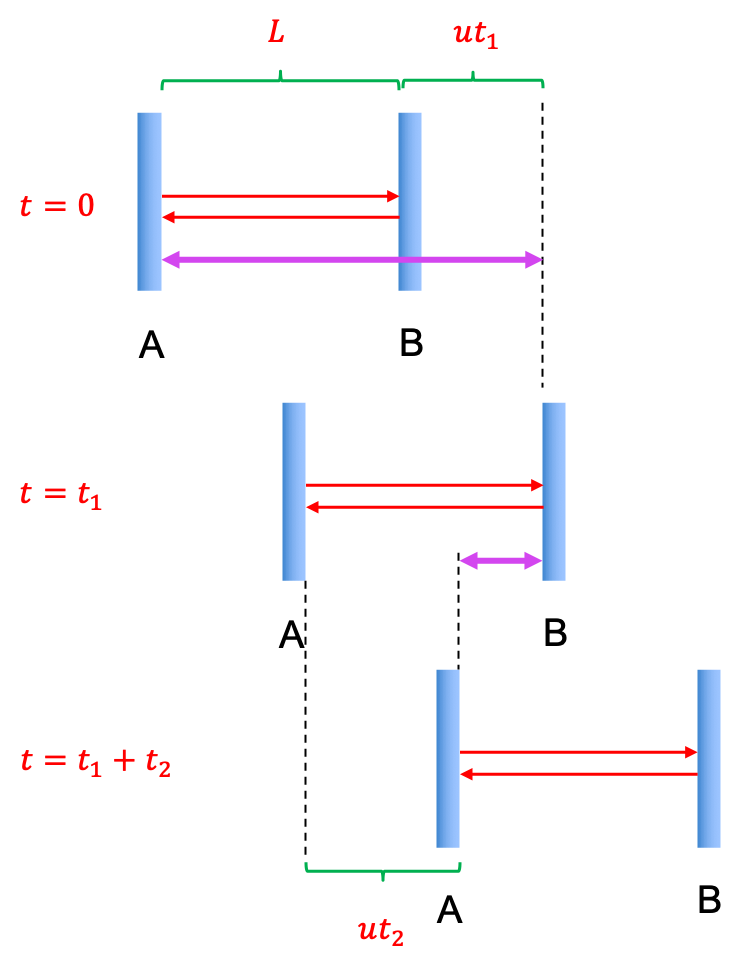Length contraction is the shortening of the length of an object moving relative to an observer, compared to its proper length, which is the length measured by an observer at rest relative to the object. Consider a moving train with a clock, which consists of a photon bouncing horizontally between two mirrors A and B (see diagram below).

For observer X, who is at rest on a platform and seeing the passing train, the total distance travelled by the photon from A to B in (indicated by the top purple arrow) is
where is the speed of light,
is length of the clock according to X, and
is the speed of the train.
When the photon returns from B to A in , A would have travelled a distance of
. Thus, the distance travelled by the returning photon from B to A (indicated by the bottom purple arrow) is
The total time taken is . Substituting eq250, where
, and eq251, where
, in
, yields
For observer Y, who is on the train, the total time (or proper time) measured by him is
, where
is called the proper length, which is the length measured by an observer who is at rest with respect to the object being measured. From eq249,
Equating eq252 with eq253 gives
where .
To illustrate eq254, consider a person on Earth observing a spaceship moving from Earth to the Moon. The proper length between the Earth and the Moon is the length measured by an observer at rest with respect to the two (i.e., the Earth frame), while the proper length of the spaceship is the length measured by an astronaut on the spaceship. The astronaut measures the proper length of the spaceship, which remains the same regardless of the spaceship’s motion. However, due to length contraction, the observer on Earth sees the spaceship as contracted in the direction of its motion. Meanwhile, the astronaut, traveling on the spaceship, observes the distance between the Earth and the moon as contracted, since, from his perspective, the Earth and the moon are moving.